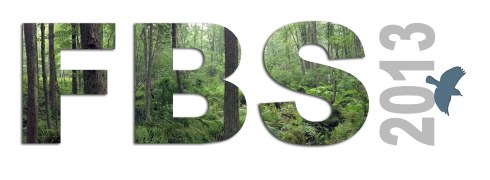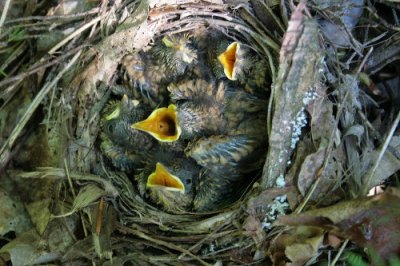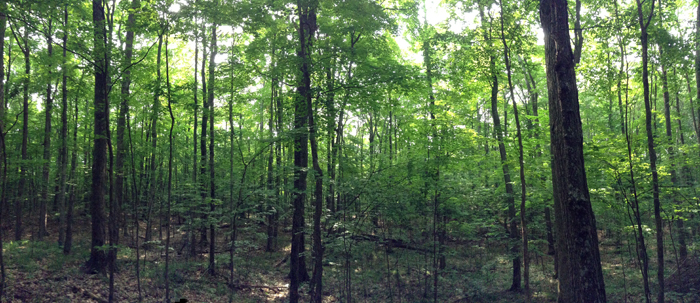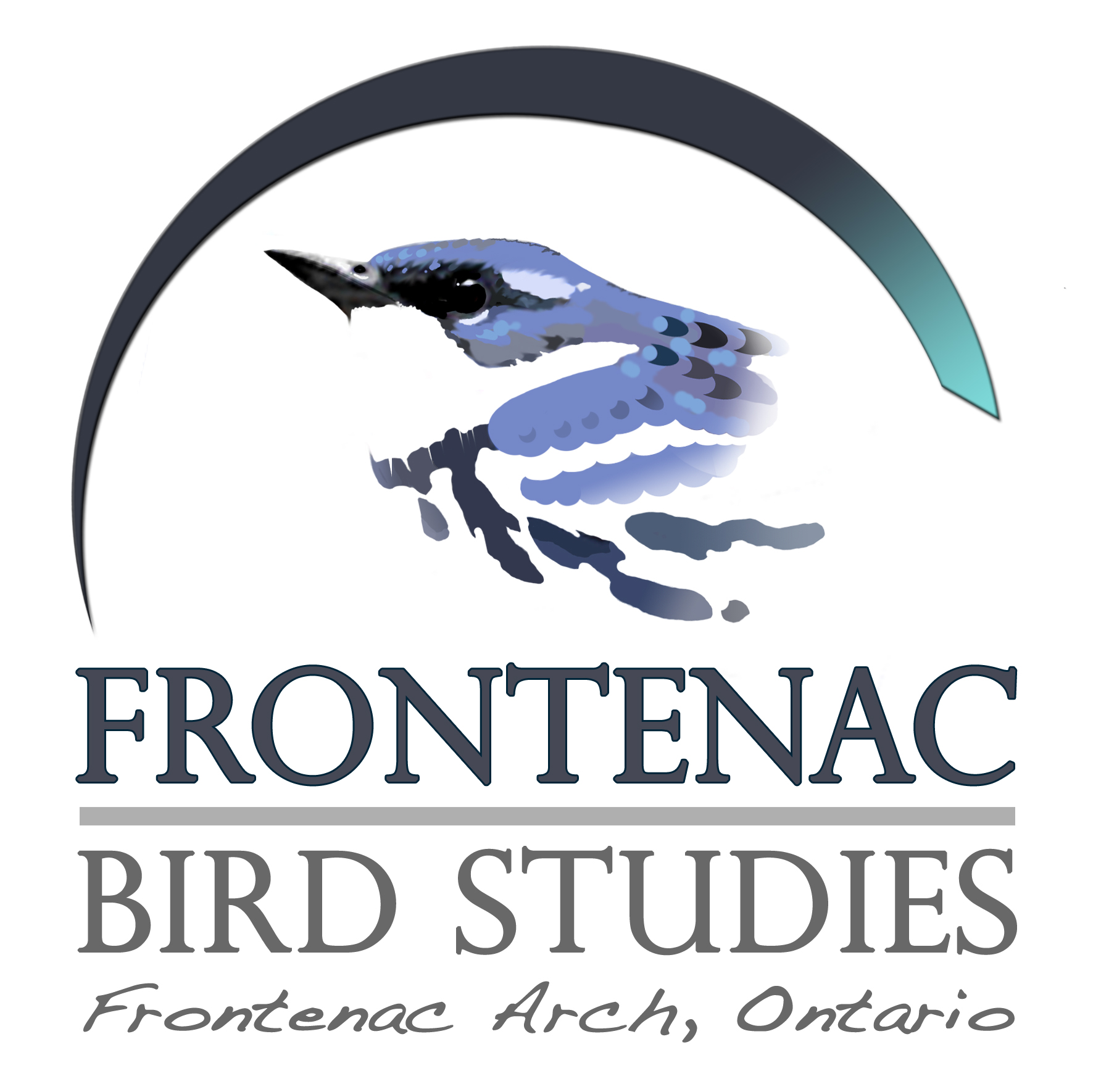Frontenac Bird Studies – The 2013 Season

Our fifth straight season of avian monitoring and research in the Frontenac Arch was a success and is now officially wrapped up! A substantial amount of data was collected in 2013 and has now finally been proofed, entered, sorted and examined. Here’s a quick recap of the major highlights from 2013 – the season of the survey….
.
Point Counts Abound

This past year we conducted a lot of point count surveys – 258 in all, to be exact. Many of these (164) were repeat surveys at fixed stations that were first sampled in 2009. Overall, the effort required >40 kms of walking in Frontenac Provincial Park and stops every 500m along 56km of roadways throughout the study area. Over time, the data enables us to monitor changes in breeding bird populations in a broad array of landscape conditions. Overall, we observed a small decline since 2009 (-3.9%). Minor changes in abundance, positive or negative, are evident for most species, however some have shifted more markedly in recent years. Yellow-throated Vireos, for example, increased in abundance on point counts by a whopping 250% in 2013!
.
Cerulean Warblers in the Frontenac Arch
In 2013, we collaborated with Bird Studies Canada and Canadian Wildlife Service as part of a project to survey Cerulean Warblers. The study looked at populations across a 300 km extent from Georgian Bay to the Frontenac Arch. Results from this project and our own studies strongly support the value of Frontenac Provincial Park forests to Cerulean Warbler populations in Canada. Perhaps North America’s fastest declining wood-warbler, the Cerulean Warbler has been assessed as Endangered in Canada and Threatened in Ontario.
.
Monitoring Avian Productivity & Survivorship (MAPS): 2009-2013
Our fifth consecutive MAPS season came to a close on August 4, 2013. After the bumper 2009 season, a substantial decline in population diversity and abundance was detected, reaching a five-year low in 2011. This past season saw the first signs of a rebound with an overall record-high productivity index and also three-year high capture rates for many species. The program is a key component of our breeding bird monitoring objectives by providing annual assessments of forest bird demographics. We are pleased to report that “Mr.33”, a male Veery banded at MABO as a hatch-year in 2009 has returned each year since, including 2013! His travels from the Frontenac Arch to Brazil amount to >56,000 km over eight migrations. This distance is equivalent to one and a half trips around the globe – incredible!

.
These are just a few of many stories from the 2013 season of Frontenac Bird Studies. Our program exists through the assistance of many wonderfully supportive individuals and organizations. The Migration Research Foundation thanks the following for their contribution to FBS in 2013!
.
Funding
The John Hackney Foundation for the Noosphere
Frontenac Avian Atlas Day sponsors
Volunteers
Chris Dunn
Steve Gillis
Seabrooke Leckie
Project Support
Corina Brdar
Ontario Parks
Peter Dawson
Ontario Parks
Bert Korporaal
Ontario Parks
Chris Robinson
Ontario Parks
Ken and Vera Shepherd
The Big Picture: Point Counts Then and Now

For us, 2013 will be remembered as the year of the point count. We’ve now finished up the last of a whopping 260 stations. This includes our own established suite of 164 on and offroad stations but also a new set conducted for our collaborative assessment of Cerulean Warblers with Bird Studies Canada. We’ve yet to enter and mine the data but a few things are clear: a) an overall decline in forest bird abundance has occurred; b) trends are positive for some species but negative for more; and c) You can almost always count on a Red-eyed Vireo or two to liven up a survey!
From 260 Point Count surveys this summer, a total of 576 Red-eyed Vireos were tallied. So often we tend to focus on less prodigious species and those showing signs of decline. However, the stability and ubiquity of the Red-eyed Vireo in the Americas is compelling and worth appreciating. Here at home in the Frontenac Arch they seem to be thriving in forests where others have thinned out if not vanished altogether. This round of surveys struck a note – these are prolific, feisty, robust survivors serving an important ecological role in hardwood forests. They are also the current record-holder amongst world bird species for most songs in a day – 20,000!

I’m beginning to let go of the notion of “normal” with respect to weather. We’re now in the middle of our fifth spring/summer season and we’ve yet to have a complete season without at least one extended period of extreme conditions. This year has been “abnormally” wet. In fact, water levels have never been so high since we began our studies in 2009. This boom and bust weather must take something of a toll on breeding bird productivity. Cerulean Warblers are clearly down from levels detected in 2009 and we’ve talked at length in the past in a similar vein regarding Louisiana Waterthrush and Prairie Warbler. However, the picture isn’t quite so gloomy across the board. A number of species are actually up from previous years including Blackburnian Warbler and Brown Creeper. It will be very interesting to dive into the data in the coming months to get a better handle on what’s happening – stay tuned for more details in the future.


AXIS M.A.P.S in 2012: Visits 1-3

Our fourth consecutive season of Monitoring Avian Productivity & Survivorship (M.A.P.S) is well underway; nearly half finished, actually. We’ve now completed our third of seven visits to each station. As previously discussed results from our first three years of M.A.P.S indicated a sharp, incremental decline in abundance and diversity of terrestrial avifauna in Frontenac woodlands and rock barrens since 2009. The breadth and severity of the decline was foremost in our minds as we walked the trodden paths from usual empty net to empty net in 2011. Hope springs eternal and a new season began in early June 2012. Below is an update on this year’s results to date for Maplewood and Rock Ridge.
Maplewood (MABO)

First the good news. Numbers of birds are up from last year at MABO, although still considerably lower than in 2009. For comparison, in 2009 we captured 91 birds total through visits 1-3 (72 new/19 rec) while we’ve captured 60 (39 new/21 rec) for the same period in 2012. Very pleased to see that Nashville Warblers and Northern Waterthrushes have returned to the site. We banded a whopping eight Northern Waterthrushes here in 2009 but didn’t even hear or see one a year ago. We’ve banded two adults of each species so far in 2012. Annual totals of Veery and Wood Thrush have been relatively consistent in abundance since 2009 and have returned in expected numbers again this year. Two new species have been recorded for the site; a singing Brown Creeper was detected on June 7 and White-throated Sparrows have been recorded singing on each visit. Notable absentees so far include cuckoos, Hermit Thrush and Field Sparrow.


It’s been a strong year for Yellow-rumped Warblers at MABO. I’ve also observed an unusually high number of adults feeding fledged young in Frontenac Provincial Park this spring/summer – good signs for this northern species in the region. While it’s still too early to judge this M.A.P.S season at MABO, with less than half of the work completed, we are seeing some positive signs of a possible rebound. Weather conditions have been closer to normal during this breeding season than any previous season since our studies began.

American Redstarts are one of the most commonly sampled species at MABO, although they are infrequent nesters within the station boundaries proper. They mainly occupy habitats at the edges of the station but we do manage to capture them later on in the summer when adults and young disperse. In 2009 at least two pairs nested along the shrubby perimeters of small wetlands within the station but they’ve not returned since. Gorgeous bird – one of my favourites.
Rock Ridge (RRID)

While things seem promising at MABO, the same cannot be stated for Rock Ridge (RRID) where numbers are a little down from last season and at least a few species seem to be struggling: most notably Eastern Towhee and Field Sparrow. Both are species of conservation concern due to significant negative trends evident in continental BBS and MAPS data. At our stations these species have consistently decreased in abundance annually since 2009. Urban expansion and changing rural landuse practices seem to be the most commonly suggested causes for the declines in both species, although these issues are less applicable in our region. On the other hand, White-throated Sparrows appear to have rebounded nicely after a near no-show in 2011. Also, the only Pine Warbler that we’ve banded during M.A.P.S was spotted feeding fledged young on June 28, 2012. The bird was originally banded as an immature male on July 18, 2010.

2011 was not a good year for cuckoos. For the first time we failed to capture one during a M.A.P.S season. This Black-billed was a welcome capture on June 18, 2012 at RRID. However, their numbers are clearly down from our first two seasons. This is true for most species at the station – present but substantially fewer in number. Rock Ridge begins to shine in July when birds abandon territories in search of food with their young so it will be interesting to see how the year will pan out at the station.

Deep Forests and Small Farms

Fieldwork has kicked into full gear as the action-packed month of June is just a week away. Our Louisiana Waterthrush surveys are nearing completion for the 2012 season. Soon I will be racking up the mileage while scouring the barrens for Prairie Warblers and other goodies in the southeast section of the park. It’s such a wonderful contrast to transition from damp mature forests to the hot and dry expanses of bedrock, poverty grass and junipers. Yesterday I found this Barred Owl in a wooded swamp about 40m from where my truck was parked on Salmon Lake Road. Barred Owls are easily the most common owl species in the area. Great Horned Owls are comparatively rare in the hardwood forests but are found with some regularity in mature mixed coniferous zones. Owl populations would be an excellent subject FBS in the future.

Louisiana Waterthrushes have been very scarce this spring, even more so than last year. The species was recorded at seven sites in 2010, our first year, but only evident at two sites so far in 2012. Fortunately, they are paired and probably nesting at the two sites. The steep sided stream corridors seem so empty without their voices.

Many species are well into their nesting cycles. While observing the Barred Owl I tracked a female Black-throated Green Warbler, which had just finished bathing in the swamp. After a bit of preening and some flitting it plunked itself into a fork at the main trunk of a young Yellow Birch. Raising binoculars to the spot revealed a surprisingly deep and bulky nest. The earliest nest record for this species in Ontario is June 5 so a nest with eggs on May 24 is quite early. This particular record is also somewhat unusual in its location in a deciduous tree species within purely deciduous forest. In Frontenac Provincial Park the Black-throated Green is more typically found in woodland with tall Eastern White Pine and/or Eastern Hemlock. However, a quick search of our point count data revealed that they are present, albeit in low numbers, within hardwood stands as well.

Below is a photo of habitat suitable for Golden-winged Warblers. This was taken just southwest of Westport, ON where there are many small, family-run farms with low-intensity agricultural practices. The presence of dense shrub cover at edges of property lines provides appropriate conditions for Golden-wings, which were designated as Threatened by COSEWIC in 2006. A total of six male Golden-winged Warblers were located yesterday morning with relatively little effort. The Frontenac Arch and the southern shield ecotone are important regions for the protection of this species. In these areas, the rugged terrain and shallow till have been effective deterrents to large scale/intensive agriculture, so far…..


